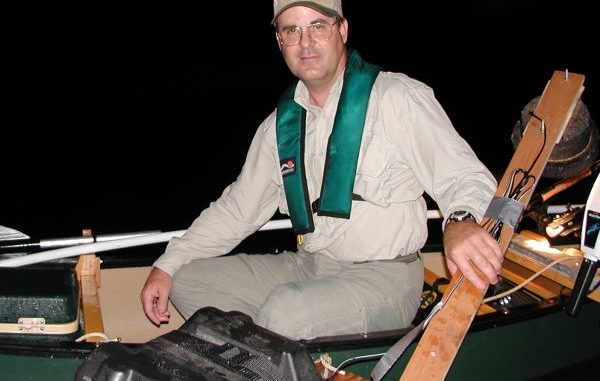
Subdue the creatures that lurk the lights
As we count down the days to Halloween, I’m reminded of a local radio talk show that annually surveys its audience to find out “What scares you?”
I’ve had a full year to think about what my answer might be.
I know it isn’t zombies. There’s been way too many movies about the walking dead lately. There’s even a hit television series called “The Walking Dead.” It’s so popular it spawned another series called “The Talking Dead,” where guest celebrities talk about zombies.
Too bad that show isn’t on C-SPAN. If members of Congress did nothing but talk about zombies all the time, this country would be much better off.
Ghosts don’t scare me, either. Making strange noises in the middle of the night? That’s on par for every father who has had three teenagers.
I’ll tell you what does scare me: Miley Cyrus. After her “performance” on the MTV Video Music Awards, I had nightmares for a week.
Something else that scares me: speckled trout. Well, not during the day. But at night under lights.
You’re probably thinking, “What’s so scary about speckled trout?” Put yourself in the shoes of a Clouser Minnow (if they wore shoes). There you are, just swimming along under a dock or pier light, and a long shadow comes behind you with vampire-like teeth and bites down.
Again you’re asking questions: “How can you feel scared when it’s your fly that is being attacked and not you?” Each fly I tie is like my baby. When it gets hammered, especially by a big trout, it makes me angry. I want to take revenge.
If the trout is over 12 inches, I usually do.
I’ve written about fly fishing at night a few times over the 12-year span of this column. Except for several weeks in the coldest part of winter, it’s a year-round strategy that really works. There have been many times where fly fishing from a lighted dock or pier has produced more trout than plastics — or even live bait.
However, like everything else in this sport, the learning never stops. I had occasion recently to add a few new tricks to my night-fishing repertoire.
A young friend of mine was interested in a night trip to the Caminada pier at Grand Isle. The piers — north and south of the pass — have lights roughly every 30 feet.
We arrived at the bridge in the wee hours of the morning. The tide was flowing inside on the north end, and the trout were lined up in spots facing the current.
My friend had no experience in saltwater fishing, but he did have experience in fishing Western rivers for coldwater trout. I decided to explain my tactics using analogies to fly fishing for rainbow trout.
For example, the trout would rise occasionally to the surface. My friend wanted to tie on a popper. While poppers sometimes do work at night, they are far less effective than submergent flies retrieved just below the surface.
If you’ve ever fished for mountain trout, you know that sometimes they rise to the surface but don’t hit the insect on top the water. They are feeding just below the surface on emergers — the final stage of hatching where the aquatic insect is most vulnerable.
Likewise, trout will often feed on bait just below the surface. To avoid being eaten, the bait must first expend a certain amount of energy to rise and clear the surface, and then make a jump or dash. It’s this point where it’s slightly more vulnerable.
On the first few casts using a lightly weighted shrimp fly skimmed just below the surface, my friend had great success. That success dampened quickly; after awhile, the trout ignored his offering.
Back to “rainbow tactics.” Often, when rainbow trout stop rising to insects that “match the hatch,” I break out a streamer, such as a woolybugger. I cast out and strip the fly across the current, passing it perpendicular to the trout sitting in the current.
Without changing flies, my friend cast out 45 degrees to the current. Then he stripped the fly in. Just about every trout it crossed gave it a strong look. Over the next 20 minutes, we put another half dozen keepers in the box.
Then something happened that I wasn’t expecting. The tide started to go slack. In no time, we had no tide.
I’ve always been a firm believer that you needed some tide — even a weak one — to do well on speckled trout. My friend proved me otherwise.
His fly was on the bottom as a result of lack of interest. When I suggested we leave, he reeled the fly up quickly and — bam! A nice 14-incher nailed it right at the surface.
“Let’s try that again,” I said.
Sure enough, a few casts later yielded another nice trout. This tactic only resulted in a few fish, but given that nobody else was catching, we were happy, happy.
Know what else scares me? I’ve created a night-fishing monster.


